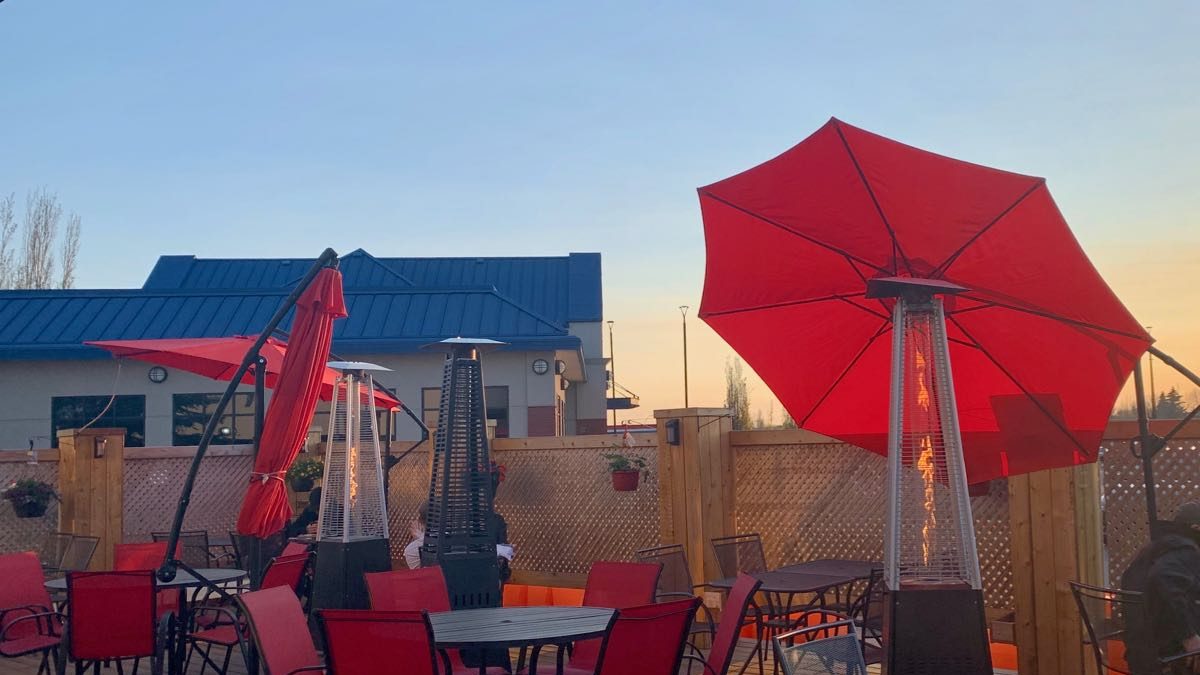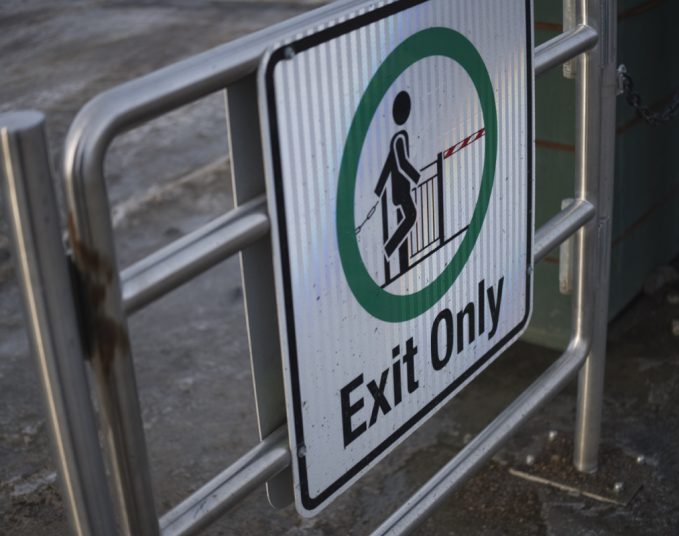Patio weather came early this year, but some patios are slow to roll out after the city introduced new guidelines one restaurant owner says are too costly.
MEAT co-owner Saylish Haas was floored to find out the city’s new extended patio requirements would cost her Old Strathcona restaurant $45,000, and she’s now stuck midway through May trying to figure out how to pay for it.
“The sticker price of that is just shocking,” says Haas, who also co-owns Pip and Next Act on the same corner, just off Whyte Avenue and 104th Street.
“We’re scrambling to figure it out. It’s already patio season… and we’re just losing money.”
The City made allowances during the COVID-19 pandemic for restaurants to put tables outside without pricey infrastructure or a lengthy permitting process, when pandemic restrictions left them unable to serve at full capacity indoors. MEAT was one of many restaurants to take advantage of the relaxed rules, setting up a full extended patio and using temporary ramps and pylons to separate the walking area from the road.
At one point, Old Strathcona had about 60 patios operating during the pandemic, which is about twice as many as are expected in the area this summer.
But the new rules in the Patio Program Guide require solid boardwalks and railings like the ones at Julio’s Barrio and Hudsons on Whyte Avenue. The guide came out in February, and Haas said after she applied for approval right away but didn’t hear back until mid-April. That’s when she called around for quotes and got the $45,000 number.
MEAT has a small patio taking up part of the sidewalk now, but plans to run the same extended patio it had through the pandemic. Haas says she relies on the summer revenue from those extra tables to carry the restaurant through the rest of the year.
“We were assuming we could do the same thing as the previous year. So we were banking on that, because we hadn’t heard anything,” Haas says.
“It’s a bit of a kick in the teeth once you find out you have to build this whole apparatus scenario so that you can extend your patio.”
Shewkar Ibrahim, the city’s director of traffic operations, says the City developed the new guidelines through conversations with business owners last fall, and had to wait on the council’s budget approval. The City then reviewed applications from restaurants and clarified the guidelines through back-and-forth conversations.
“Throughout our engagement, the plan was always to begin the rolling out of the program in April,” she says.
Ibrahim says boardwalks and railings are important to handle increased traffic, and also to ensure the walkway is safe for people with accessibility issues, such as people in wheelchairs or parents pushing strollers.
Old Strathcona Business Association executive director Cherie Klassen says she can empathize with business owners who feel the new guidelines are a financial burden, especially when some are still recovering from pandemic losses.
The temporary pandemic patios, however, caused a lot of headaches.
“A lot of (the ramps) broke. A lot of them were slippery. We actually ended up building some of our own ramps that were ADA compliant, which ended up not lasting,” Klassen says.
“Having that temporary infrastructure was fine for a couple years, but we did hear a lot of complaints from patrons and guests and the accessibility community that they were just not sufficient.”
The new patio guidelines offer four options for different sizes, and Ibrahim says officials are willing to work with restaurants to accommodate their specific needs. The city has also waived permit fees this year, and stretched the licensing time so each permit lasts for four years.
Ibrahim says 72 bars, cafes and restaurants have already applied for the patio program citywide, and 45 have been issued permits so far. She says the City will review the program at the end of summer and take feedback from business owners into consideration for possible changes next year.
Haas would like to see more acknowledgement from the City that restaurants have had a rough go the last three years.
“They want us to create vibrancy on the streets. My businesses are trying to offer that to our customers. And to have an expense that large on such short notice is just, I mean we’re already drowning in debt,” she says.
“I don’t know if you’ve ever tried to get on a patio waitlist on a hot summer day. The more tables that businesses can provide, the better for everybody. And everybody wins in that scenario.”
Savvy AF. Blunt AF. Edmonton AF.




